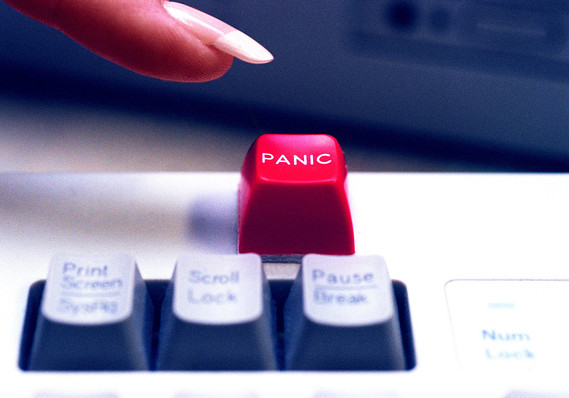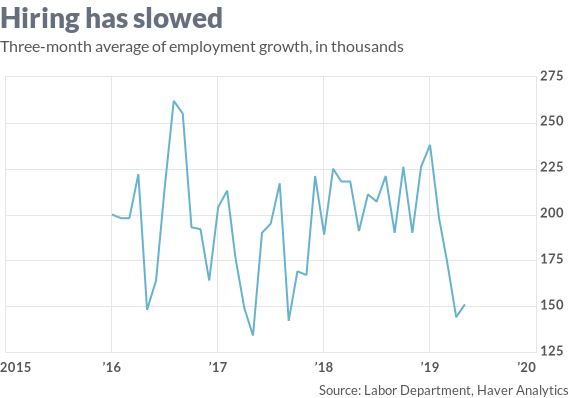 Getty Images
Getty Images
The economy looked like it was perking up a few months ago, but now gray clouds are moving in.
The latest shadow was cast by a dismal May employment report that showed a meager 75,000 increase in new jobs along with slowing wage growth. Thankfully the unemployment rate held fast at a 49-year low of 3.6%.
Read: U.S. adds a meager 75,000 jobs in May in warning sign for economy
Also: The worst part of a crummy jobs report might be ebbing pay gains for workers
One poor jobs report is usually nothing to worry about, but the slowdown in hiring in May is part of a broader trend. The U.S. has added an average of 151,000 jobs in the past three months, down from a recent high of 238,000 at the start of 2019.

Economists place a large share of the blame squarely on festering trade tensions between the U.S. and China. The dispute has hurt the global economy, crimped U.S. exports, damaged American manufacturers and rattled corporate executives and small-business owners alike.
“The May U.S. jobs report gave us a taste of what’s ahead if trade war threats continue to escalate and tariffs continue to go higher,” said chief economist Scott Anderson of Bank of the West. “This this is not just a one-off hiccup in the data, but part of a broader more prolonged pattern of labor market softening.”
The U.S. economy, to be sure, doesn’t appear in danger of imminent recession.
The strongest labor market in decades has elevated consumer confidence and stoked steady household spending, for one thing. And the Federal Reserve earlier this year put a halt to further interest-rate increases, a sharp turnabout that’s led to sharply lower borrowing costs for businesses and consumers.
“Is it time to hit the panic button? Probably not,” said Ward McCarthy, chief financial economist at Jefferies LLC.
That doesn’t mean investors, ordinary Americans and the Fed shouldn’t worry.
“A low jobless rate, elevated consumer confidence, and firmer wage growth suggest the broader economy is still on firm footing,” said chief economist Richard Moody of Regions Financial, “but a similarly weak June employment report would be an ominous sign.”
Read: Here’s another bad sign in the jobs report
The Fed is unlikely to cut interest rates in June, economists say, so the pressure is likely to grow on the White House to hasten negotiations with China and to resolve a conflict with Mexico over illegal immigration that spurred President Trump to threaten to apply tariffs to all Mexican imports.
“The sooner the U.S. can steer out of choppy water, the faster our economy will expand,” said Michael D. Farren, an economist and research fellow at the Mercatus Center at George Mason University.
Some temporary relief could come next week if retail sales rebound in May as expected. Economists forecast a solid 0.6% increase in sales, which would support the idea that households are still spending at a steady pace.
A pair of inflation barometers, meanwhile, are likely to show that price pressures remain muted. Low inflation gives the Fed further ammunition to cut interest rates if the central bank thinks the economy needs support.
The rising chances of a Fed rate cut actually spurred a rally in the stock market last week despite the dispute with Mexico and the weak employment gains in May.
The Dow Jones Industrial Average DJIA, +1.02% and S&P 500 SPX, +1.05% ripped off fourth straight daily gains and the yield on the 10-year Treasury yield TMUBMUSD10Y, +0.00% fell to a 21-month low of 2.06%.










Add Comment